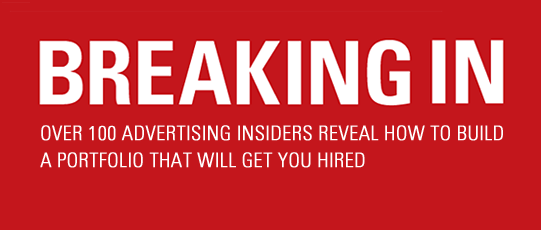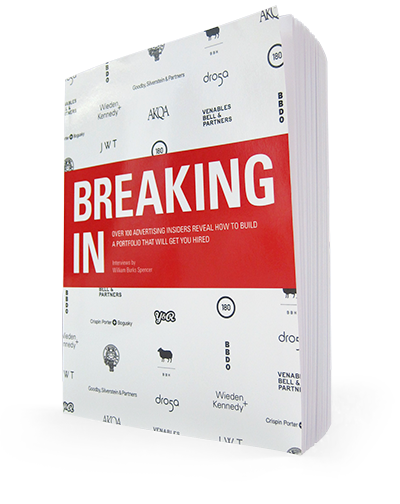In case you missed it, check out some great work from Val Klump.
WS: What do you look for in a student book? And what impresses you?
VK: I look for a book that has a lot of good, realistic ideas. Pretty obvious, right?
“Good” is a given, of course, and fortunately advertising offers a million and one ways to make a good book. You can create clever print ads, shoot funny videos, build mind-bending websites, comp ridiculous outdoor billboards, record your own radio spots, or anything else you can think of—a mix of media is advisable, but good ideas are good ideas, period. So fill ’er up with goodness. And remove anything you’re not into 100 percent. They say your book is only as good as the worst ad in it—it’s a tired truism, but there’s something to it.
Realism is a personal pet peeve of mine. Student books will often be filled with ideas that the client would never buy or that feel totally wrong for the brand. Be smart; go crazy, but be smart. And make extra sure that your digital ideas are realistic. Working at Google makes me especially sensitive to this one. Think about the constraints of the Internet and work inside them. You can’t click a button on “Snickers.com” and have a Snickers bar eject itself out of your optical drive—that would be a great idea if it were possible, but it’s not. This is especially true for any idea relating to Facebook, which is a very locked-down platform. Maybe I’m being crotchety here, so please don’t limit yourself…just be intelligent about it.
Finally, show a lot of work. A lot. Early in my advertising career, a creative director told me that he wouldn’t hire anyone who had less than 10 campaigns of three ads each, meaning you should have 30 ads in your portfolio, minimum. Upon hearing this, my art director and I spent six weeks, 12 hours a day, doing nothing but Photoshopping print ads for every product we could think of. We finished with 15 to 16 campaigns we thought were good. We then showed these ads to everyone who would pay attention and asked them to pick their favorites—inevitably, everyone picked the same ads as the best—and we ended up with a pretty big book of over 30 ads. Creative directors love to see this kind of output. Quality in volume is a very attractive thing in a junior creative, because you can’t spend all your time crafting one idea in this business. When you first get a brief, ideas should leap from your head onto the wall until it’s covered.
As for what impresses me most—it’s the ability to make things. More and more these days, young people are coming into the business able to shoot their own commercials, create websites, program games, take photos, make animations, build Facebook apps, and generally act as one-person ad agencies. This not only serves to intimidate the senior creatives, it makes the CDs salivate, because getting ideas off paper is at least as hard as getting them on paper in the first place, especially at smaller shops. Making stuff for little or no money is also useful for presentations, which, as you will learn, often feels like half the job. If you can make things, and make them well, you will never be unemployed.


Comments are closed.